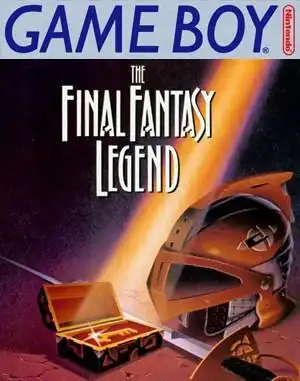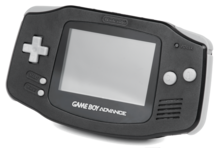For many of us who grew up with Nintendo's portable powerhouse, the Game Boy, certain cartridges hold a special kind of magic. One such game, often remembered fondly (and sometimes frustratingly) by early handheld RPG fans, is The Final Fantasy Legend. Released way back in 1990 in North America, this wasn't quite the Final Fantasy you knew from the NES, but something... else entirely. It was Square's first foray onto the Game Boy and, unbeknownst to many at the time, the very beginning of the quirky, experimental SaGa series.
Let's take a trip back and explore what made this game a unique, sometimes brutal, but ultimately memorable part of the retro RPG landscape.
More SaGa Than Fantasy? Unpacking the Gameplay
If you popped The Final Fantasy Legend into your Game Boy expecting a direct port or simple spin-off of the mainline Final Fantasy games, you were in for a surprise. While it shared the turn-based combat and world map exploration, its core mechanics were wonderfully weird.
You assemble a party of up to four characters, choosing from Humans, Mutants, or Monsters. This choice drastically affected how they grew:
- Humans: Gained stats only by using specific, often rare, stat-boosting items. A slow burn, but potentially powerful if you invested.
- Mutants (Espers in Japan): The wild cards! After battles, they'd randomly gain stat boosts or new abilities/spells. This was exciting but unpredictable. Sometimes you'd get amazing powers, other times... not so much.
- Monsters: Grew by eating meat dropped by defeated enemies. Eating different types of meat could transform them into entirely different monsters, with new stats and abilities. This was a constant gamble – would that piece of meat turn your powerful Ogre into a weak Goblin? Maybe!
This unpredictable growth system, especially for Mutants and Monsters, set it apart from the predictable level-up systems of most RPGs at the time. Equipment also had limited uses, breaking after so many swings or casts, forcing resource management.
Combat itself was standard turn-based fare, but the difficulty could spike dramatically. Random encounters were frequent, and sometimes, a single enemy type could wipe your party if you weren't prepared or if the RNG wasn't in your favor. Defeated characters lost a 'heart' and needed revival in town; run out of hearts, and that character was permanently gone unless replaced. Talk about stakes!
A Strange and Wonderful Journey Up the Tower
The game's world was centered around a colossal Tower, built by a mysterious entity known as the Creator, connecting several distinct worlds or layers: a typical fantasy continent, an ocean world, a sky world, and a post-apocalyptic ruin. Your goal? Climb the Tower, traversing these bizarre lands, collecting legendary items, and eventually confronting the Creator at the summit.
The story was less about complex character arcs and more about the episodic, often surreal, encounters in each world. You'd meet strange kings, talking animals, resistance fighters, and face off against powerful fiends inspired by mythological creatures. It was a unique narrative structure for an RPG, feeling more like a series of linked adventures than one long, continuous epic. And the ultimate confrontation with the Creator? Let's just say it was... memorable, and solidified the game's departure from traditional RPG tropes.
From Game Boy Pixels to Global Influence
The Final Fantasy Legend holds a significant place in gaming history. It wasn't just Square's first Game Boy title; it was also their first game to sell over a million copies. This success proved the viability of RPGs on handhelds and paved the way for the entire SaGa series, which continued to experiment with unconventional mechanics.
Nobuo Uematsu, the legendary composer behind the Final Fantasy scores, crafted the music for this game too, working within the Game Boy's technical limitations to create catchy, atmospheric tunes that are still recognizable to fans.
Perhaps its most surprising legacy? Game Freak founder Satoshi Tajiri cited The Final Fantasy Legend as an influence on his work, specifically noting how its success demonstrated the potential for RPGs on the Game Boy – a potential that would later be fully realized by a little series called Pokémon.
While initial reviews were generally positive, praising its depth for a handheld title, retrospective opinions are more mixed. Some critics find its random progression and high difficulty frustrating by modern standards, while others appreciate its historical significance and unique charm. And who can forget the infamous "Chainsaw" weapon, capable of instantly defeating even the final boss? A true legend within the legend!
Re-living the Legend Today
If you're feeling nostalgic or curious about experiencing this piece of RPG history, the easiest way to play The Final Fantasy Legend today is through the Collection of SaGa: Final Fantasy Legend. Available digitally on platforms like the Nintendo Switch, PC, and mobile, this collection bundles the first three Game Boy SaGa titles. It includes modern conveniences like high-speed mode and adjustable screen filters (including a classic green tint!), letting you experience the original game with a touch more comfort.
Frequently Asked Questions
Q: Is The Final Fantasy Legend actually a Final Fantasy game? A: In Japan, it was released as Makai Toushi Sa·Ga, the first game in the SaGa series. The "Final Fantasy Legend" name was added for Western marketing due to the popularity of the Final Fantasy brand, but its gameplay and design are distinct from the main FF series.
Q: How long is The Final Fantasy Legend? A: The game was designed for shorter play sessions, like a commute. A typical playthrough can range from 6 to 10 hours, depending on exploration and difficulty with random encounters.
Q: Why is the character growth so random? A: Director Akitoshi Kawazu wanted to differentiate the game from traditional RPGs and create a sense of unpredictability and experimentation, especially with the Mutant and Monster classes. This became a hallmark of the SaGa series.
Q: Can I play the original Game Boy cartridge today? A: Yes, if you have the original hardware or compatible retro consoles. However, the Collection of SaGa: Final Fantasy Legend is the most accessible official modern release.
Stepping into The Final Fantasy Legend today is stepping back into a fascinating, slightly bizarre corner of 16-bit handheld history. It's a game that took risks, defied expectations, and left a lasting mark, even if its legacy is more "SaGa" than "Fantasy." It's a wild ride up that tower, and one well worth remembering.


